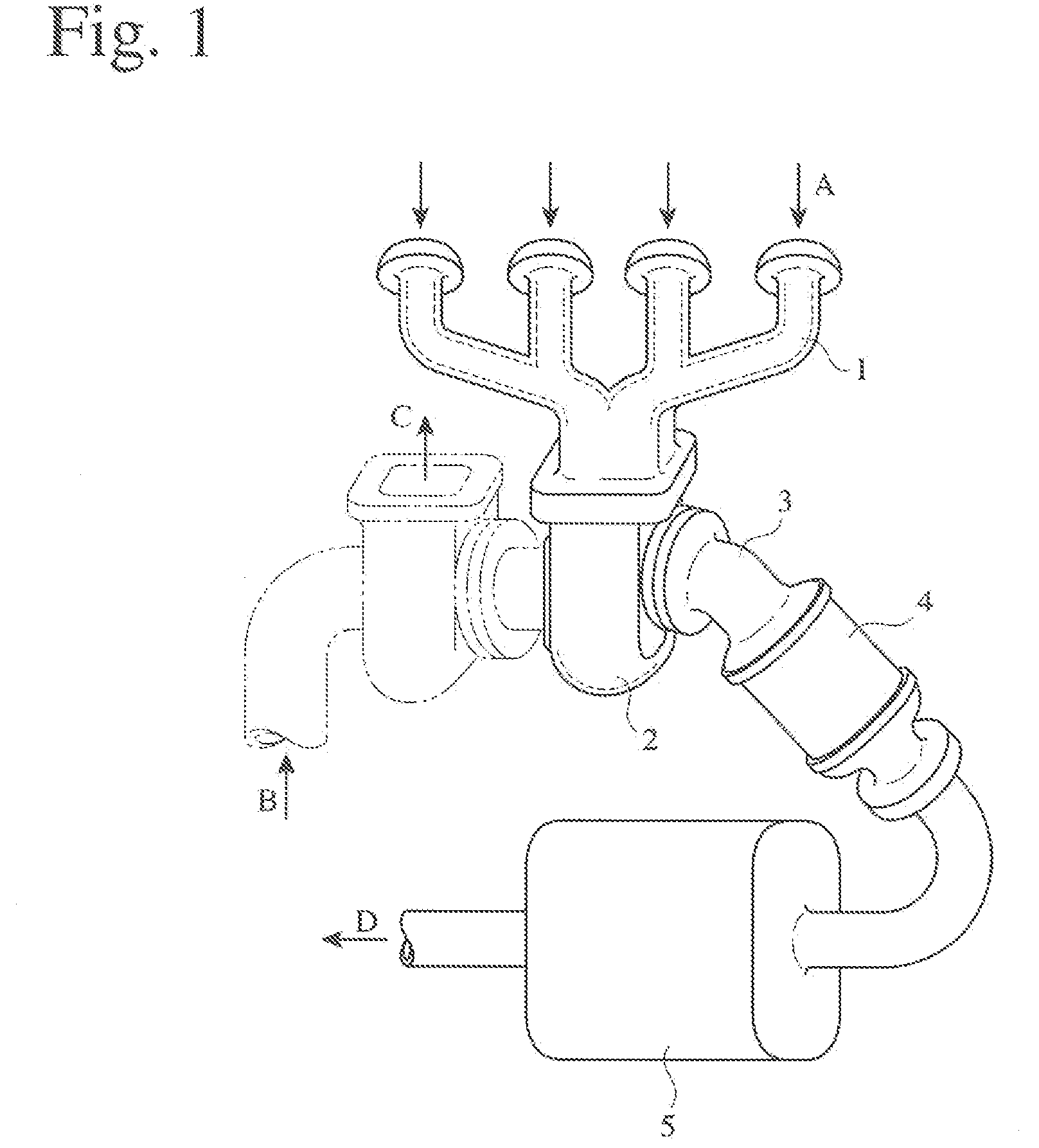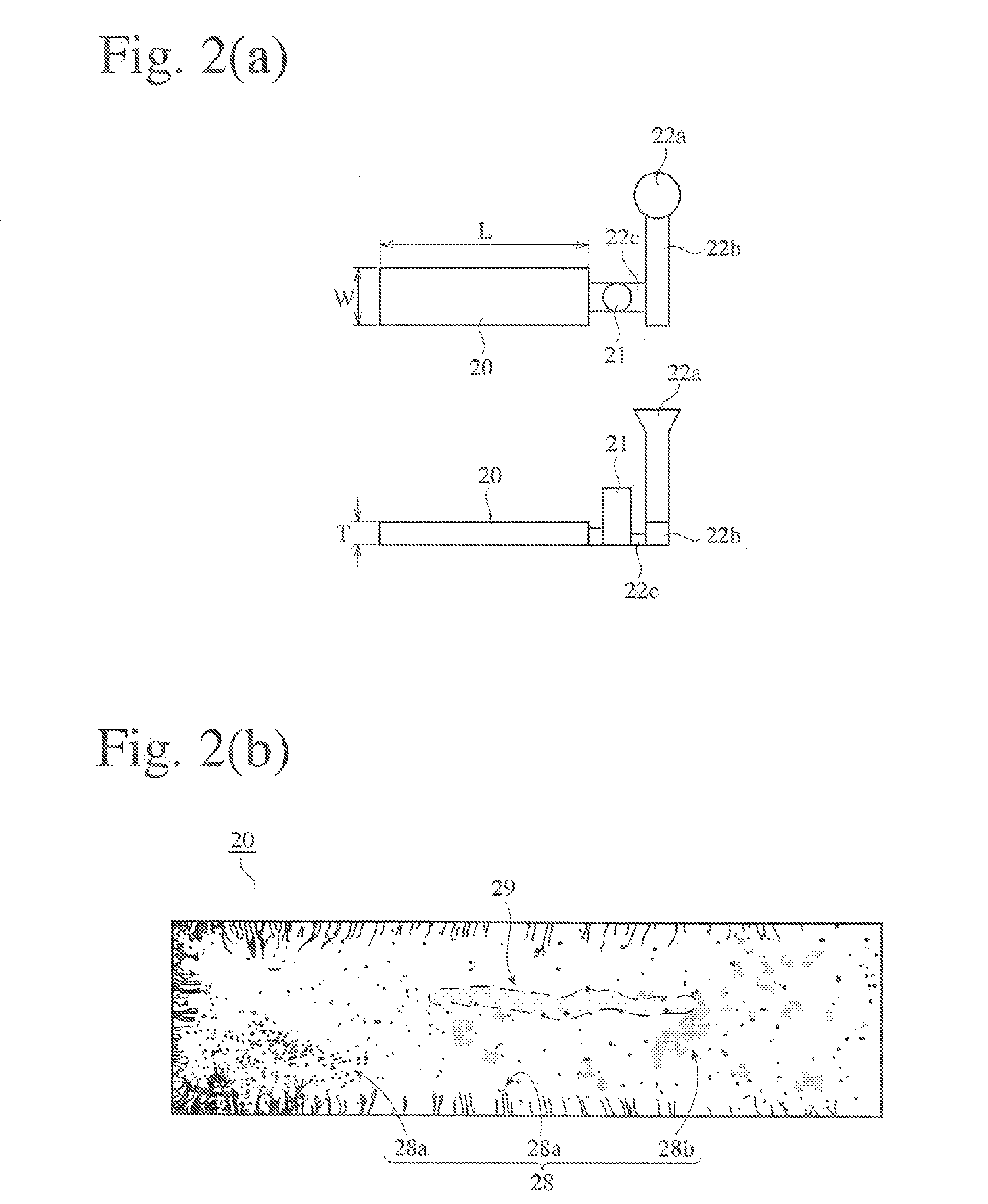HIGH-Cr HIGH-Ni, HEAT-RESISTANT, AUSTENITIC CAST STEEL AND EXHAUST EQUIPMENT MEMBERS FORMED THEREBY
a high-ni, austenitic cast steel technology, applied in the direction of engine components, mechanical equipment, machines/engines, etc., can solve the problems of reducing the high-temperature yield strength and room-temperature elongation of cast steel, generating more small cavities, and reducing the high-temperature yield strength and room-temperature elongation. , to achieve excellent thermal fatigue life, high high-temperature yield strength, the effect of oxidation resistance and room-
- Summary
- Abstract
- Description
- Claims
- Application Information
AI Technical Summary
Benefits of technology
Problems solved by technology
Method used
Image
Examples
examples 1-47
, COMPARATIVE EXAMPLES 1-14
[0085] Tables 1-1 to 1-4 show the chemical compositions of the heat-resistant cast steel samples of Examples 1-47, and Tables 2-1 and 2-2 show the chemical compositions of the heat-resistant cast steel samples of Comparative Examples 1-14. The cast steel contains too much Al in Comparative Examples 1-8, too little N in Comparative Example 9, too much N in Comparative Example 10, too much O in Comparative Examples 11 and 12, and too much O and N in Comparative Example 13. Comparative Example 14 shows one example of the high-Cr, high-Ni, heat-resistant, austenitic cast steel described in JP2000-291430A.
[0086] Each cast steel of Examples 1-47 and Comparative Examples 1-14 was melted in a 100-kg, high-frequency melting furnace with a base lining in the air, tapped from the furnace at 1550° C. or higher, and immediately poured into a one-inch Y-block of 25 mm×25 mm×165 mm at 1500° C. or higher to form a sample.
TABLE 1Compositions of Samples of Examples (% by...
example 48
[0107] The cast steel of Example 36 was melted in a 100-kg, high-frequency melting furnace with a base lining in the air, poured into a ladle at 1550° C. or higher, and immediately poured into a sand mold for the turbine housing 32 shown in FIG. 3 at 1500° C. or higher. To reduce the weight, main portions of the turbine housing 32 were made as thin as 5.0 mm or less. The flanges, etc. of the turbine housing 32 were machined. Gas defects such as pinholes and blowholes, casting defects such as cavities and misrun, etc. were not observed in the resultant turbine housing 32, and machining trouble, the abnormal wear and breakage of cutting tools, etc. did not occur.
[0108] The turbine housing 32 of this Example was mounted to an exhaust simulator corresponding to a 2000-cc, straight, four-cylinder gasoline engine, to conduct a durability test for measuring cracks and a life until cracking occurred. The durability test conditions were such that the exhaust gas temperature at full throttle...
PUM
| Property | Measurement | Unit |
|---|---|---|
| temperature | aaaaa | aaaaa |
| temperature | aaaaa | aaaaa |
| elongation | aaaaa | aaaaa |
Abstract
Description
Claims
Application Information
 Login to View More
Login to View More - R&D
- Intellectual Property
- Life Sciences
- Materials
- Tech Scout
- Unparalleled Data Quality
- Higher Quality Content
- 60% Fewer Hallucinations
Browse by: Latest US Patents, China's latest patents, Technical Efficacy Thesaurus, Application Domain, Technology Topic, Popular Technical Reports.
© 2025 PatSnap. All rights reserved.Legal|Privacy policy|Modern Slavery Act Transparency Statement|Sitemap|About US| Contact US: help@patsnap.com



